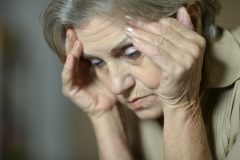Brain Damaging Effects of Electroshock: The Facts

Most people think that electroshock treatment (ECT) – the application of hundreds of volts of electricity sent searing through the brain to induce a grand mal seizure – is banned but this is not the case. It can also be given against a person’s wishes in Australia. Also called electroconvulsive therapy, it is not therapy it is torture.
So unwanted is electroshock that one Australian woman forced to undergo electroshock said she has had security guards wheel her down to the treatment room holding her down so she didn’t escape. “I felt like I was being wheeled down to the gas chamber really,” she said. She would even eat from stashed food to avoid the general anaesthetic and when staff found her food, she resorted to eating grass to avoid the electroshock.1
The United Nations (UN) and World Health Organisation (WHO) together issued a Guidance on mental health and human rights legislation in October 2023. It states,
“coercive practices in mental health care violate the right to be protected from torture or cruel, inhumane and degrading treatment.” Coercive practices include restraint and involuntary electroshock. The Guidance calls on all governments to prohibit all coercive measures.2
The Guidance says that electroshock is an “irreversible intervention” which can cause “memory loss and brain damage.” 3
Click here to download the PDF
Psychiatrists deceptively cloak electroshock with medical legitimacy — the hospital setting, white-coated assistants, anaesthetics, muscle paralysing drugs and sophisticated-looking equipment. The effects of shock treatment are horrific, but the full ramifications are not explained to the patients or families. Worse, when objections are raised, they are more often than not overruled. Electroshock never addresses the cause of the person’s problems and offers no cure.
History of Electroshock
Electroshock was developed in 1938 out of a Rome slaughterhouse, where pigs were electroshocked to make it easier to slit their throats in order to kill them. A psychiatrist, Ugo Cerletti, had been experimenting with electric shock on dogs where half of the animals died from cardiac arrest. After seeing the pigs being shocked, he decided to use this on people.4
In Australia in the early 1940s, one of Australia’s first ECT machines was constructed by Birch, the Superintendent of Mental Institutions for South Australia. He first tested the ECT machine on rabbits and then used it on patients in August 1941 at Parkside Mental Hospital in Adelaide.5
Side Effects

Cardiovascular complications – including irregular heartbeat, and heart attack. Other potential side effects are: stroke; cognition and memory impairment (sometimes permanent); dental or oral trauma; physical trauma; manic symptoms; prolonged seizures; worsening of “psychiatric symptoms”; cardiac arrest and even death. Manufacturers of an ECT machine used in Australia, state other serious adverse events have occurred including coma and homicidality.6
Any claim that ECT does not cause brain damage ignores basic electrical science as when electricity is sent through the brain, it is converted into heat, increasing the temperature. Cells can suffer dysfunction, temporary injury, permanent damage or even cell death, according to Dr. Ken Castleman, Ph.D., a biomedical engineer who has provided legal testimony in ECT device litigation.7
A 2017 published review of more than 90 ECT studies since 2009 showed they remain “methodologically flawed” and “Given the well-documented high risk of persistent memory dysfunction, the cost-benefit analysis for ECT remains so poor that its use cannot be scientifically, or ethically, justified.” The review also found that there is still no evidence that ECT is more effective than placebo for depression or suicide prevention.8
A major proponent of ECT, psychiatrist Harold A. Sackeim, when addressing the regularity of patients complaining about memory loss, stated, “As a field, we have more readily acknowledged the possibility of death due to ECT than the possibility of profound memory loss, despite the fact that adverse effects on cognition [consciousness] are by far ECT’s most common side-effects.” 9
The Electroshock Machine
When the Therapeutic Goods Administration (TGA) approved the current ECT devices for use in Australia in 2004 and 2015, no medical studies proving safety and efficacy were required, provided or relied upon to make this decision. Yet, on October 19, 2018, following a lawsuit it settled, Somatics LLC, the manufacturer of the Thymatron ECT device, which is used in Australia, issued a warning of “permanent brain damage” in its new risk disclosures.10
The early 2000s, Western Australia’s Graylands psychiatric hospital Medical Policy and Procedures Manual gave instructions on how to administer ECT. It explained how to turn the ECT machine on and then stated, “At this stage the electrode set is as lethal as a loaded gun, and should be treated as such!” 11
Number of Electroshock Treatments Given in Australia

Today, psychiatry shocks and tortures the brains of approximately 1.4 million people every year worldwide, including children, pregnant women and the elderly. In 2023, there were 29,165 Medicare funded ECT “treatments” given to vulnerable Australian adults and children at a cost of $5,090,337 including anaesthetic.12
In 2023/24 the numbers of Medicare funded treatment of electroshock given by psychiatry in each state and territory of Australia were: Vic: 9,111 Qld: 7,179 ♦ NSW: 7,721 ♦ WA: 3,160 ♦ SA: 1,663 ♦ ACT: 232 ♦ Tas: 348 ♦ NT: 63 ♦ Australian Total: 29,477. These figures do not include state and territory government funded ECT. For example, in 2023/24 Medicare funded 3,160 “treatments” in WA. Yet the total “treatments” given in WA for that financial year was 6,329.13
The elderly and women are a target for ECT. In Australia, in 2023, there were 6,300 Medicare funded electroshocks given to people over the age of 65, including 334 given to the elderly aged 85 or over. And a staggering 70% of the total Medicare funded ECT “treatments” were given to women.14
In June 2011, it was reported that patients in NSW had been anaesthetised for more than 2 days to undergo court ordered ECT. Psychiatrist Jonathan Philips said he was concerned that such treatment could be the start of the “slippery slope” for even more radical treatment. Anaesthetising someone for 2 days to administer electroshock has parallels to Chelmsford Hospital in NSW, where deep sleep treatment (patients were put into a drug induced coma and given electroshock) was administered and 48 people died. A Royal Commission was held in the late 1980s into Chelmsford Hospital and subsequently saw deep sleep therapy banned in NSW.15
Involuntary Electroshock
Electroshock can be forced on adults and children under 18 years of age without their consent or parent’s consent in every state and territory in Australia. A complete ban on ECT for children under 14-years-old in WA and under 12-year-olds in the ACT prevents them from being involuntary electroshocked.16
In 2019, the United Nations directly told Australia it should,
Prohibit the use of non-consensual electroconvulsive therapy on the basis of any form of impairment.17
In 2023, the NSW Mental Health Review Tribunal approved 765 applications for involuntary electroshock, 3 of these were for girls under 16.18
In 2023 the UN and WHO both stated together that,
ECT is not recommended for children, and this should be prohibited through legislation.” 19
Does Psychiatry Know How Electroshock Works?
Psychiatry admits it still doesn’t know how ECT “works,” a fact easily discovered when researched for. Victoria‘s former Deputy Chief Psychiatrist Professor Kuruvilla George, wrote in an ECT article, “How does ECT work? This is the million dollar question and the first thing to state is that no one is certain.” 20
Psychiatrist’s attempts at explaining how ECT works include such statements as, “It is believed…,” “it has been suggested…,” and “One theory suggests….” Imagine a heart surgeon claiming he doesn’t know how the heart works but has dozens of theories – and no scientific fact – about why a coronary bypass operation should be performed. He would be sued for malpractice!
Take Action Now to Help Ban Electroshock
Write, phone, visit or email the Premier, Leader of the Opposition, Minister and Opposition Minister for Health and your local Member of Parliament in your state or territory:
Express your concerns about electroshock and ask them to amend your Mental Health Act to ban electroshock for all ages with criminal fines and prison terms in violation of the ban.
ACT: https://www.parliament.act.gov.au/members/find-your-members
NSW: https://www.parliament.nsw.gov.au/members/Pages/all-members.aspx
NT: https://parliament.nt.gov.au/members/by-name
Qld: https://www.parliament.qld.gov.au/Members/Current-Members/Member-List
SA: https://www.parliament.sa.gov.au/en/Members/Member-Details
TAS: https://www.parliament.tas.gov.au/__data/assets/pdf_file/0027/70794/Legislative-Council-Members-List.pdf AND https://www.parliament.tas.gov.au/house-of-assembly/currentmembers
VIC: https://www.parliament.vic.gov.au/members/member-search/?member-status=current&page=1&pageSize=10&sortType=2
WA: https://www.parliament.wa.gov.au/parliament/memblist.nsf/WAMembers
References
- Sarah Farnsworth, “Hundreds of patients forced to have ECT in Victoria without legal representation,” ABC News, 21 Nov.2016. https://www.abc.net.au/news/2016-11-20/patientsforced-to-have-ect-without-legal-representation/8030996
- Mental Health, human rights and legislation, Guidance and practice, Geneva: World Health Organisation. United Nations Human Rights, Office of the High Commissioner, 9 October 2023, pages 15,58,72,73. https://www.who.int/publications/i/item/9789240080737
- Mental Health, human rights and legislation, Guidance and practice, Geneva: World Health Organisation. United Nations Human Rights, Office of the High Commissioner, 9 October 2023, p.58. https://www.who.int/publications/i/item/9789240080737
- Renato M.E. Sabbatini, PhD, “The History of Shock Therapy in Psychiatry,” Brain and Mind Magazine, August/September 1997.
- Ian Freckelton, Beth Wilson, Electroconvulsive Therapy: Law, History and Practice, Journal of Law and Medicine, Volume 8 May 2001, p. 394.
- “Electroconvulsive Therapy (ECT) Devices for Class II Draft Guidance for Industry, Clinicians and Food and Drug Administration Staff,” US Food and Drug Administration, 29 December 2015 pages 13, 14. https://www.fdanews.com/ext/resources/files/2016/01/01-16-FDA-ECT.pdf; “Electroconvulsive Therapy (ECT) Services: Monitoring and Auditing” – MHDA, Guideline, NSW Government, Health Northern Sydney Local Health District, GE2013_022, 22 June 2016, S.4 (2.3); Somatics Thymatron ® System IV, User Manual TS4, Rev 21, Somatics LLC, 2019. https://www.manualslib.com/manual/1629768/Somatics-Thymatron-System-Iv.html#manual
- Ken Castleman, Ph.D., Testimony presented to the Maryland Senate Finance Committee Hearing on the SB 302: Mental Health – Electroconvulsive Therapy for Minors – Prohibition, 20 Feb. 2019.
- John Read and Chelsea Arnold, “Is Electroconvulsive Therapy for Depression More Effective Than Placebo? A Systematic Review of Studies Since 2009,” Ethical Human Psychology and Psychiatry, Volume 19, Number 1, 2017. https://www.researchgate.net/publication/ 319984428_Is_Electroconvulsive_Therapy_for_Depression_More_Effective_Than_Placebo_A_Systematic_Review_of _Studies_Since_2009
- “Memory and ECT: From Polarization to Reconciliation,” Editorial. The Journal of ECT, Vol 16, No.2, 2000, pp.87-96.
- “User Manual Thymatron ® System IV,” UM-TS4, Rev 21, Somatics LLC, 2019. https://www.manualslib.com/manual/1629768/Somatics-Thymatron-System-Iv.html#manual
- Graylands Hospital Policies and Procedures: MEDICAL, in use in early 2000’s, obtained by CCHR under the Freedom of Information Act. Contact CCHR Aust for a copy.
- Statistics generated on Medicare Australia website using MBS item codes: 14224 for electroconvulsive therapy and 20104 for anaesthetic (select “benefit” from the drop-down arrow). http://medicarestatistics.humanservices.gov.au/statistics/mbs_item.jsp
- Statistics generated on Medicare Australia website using MBS item code: 14224 for electroconvulsive therapy. http://medicarestatistics.humanservices.gov.au/statistics/mbs_item.jsp Chief Psychiatrist Annual Report 2023–2024, p.66.https://www.chiefpsychiatrist.wa.gov.au/about/publications/
- Statistics generated on Medicare Australia website using MBS item code: 14224 for electroconvulsive therapy (select “Item by Patient Demographic Reports” tab at the top of the web page). http://medicarestatistics.humanservices.gov.au/statistics/mbs_item.jsp
- Nicky Philips, “ECT patients under anaesthetic for two days,” Sydney Morning Herald, 18-19 June 2011, p.7.
- WA Mental Health Act 2014, s 194, as at 1 July 2023. https://www.legislation.wa.gov.au/legislation/statutes.nsf/main_mrtitle_13534_homepage.html ACT Mental Health Act 2015, s 147 (3), as at 27 March 2024. https://www.legislation.act.gov.au/a/2015-38/
- “Concluding observations on the combined second and third periodic reports of Australia,” Committee on Rights of Persons with Disabilities, 34 (c), 15 October 2019, https://disability.royalcommission.gov.au/system/files/exhibit/EXP.0003.0001.0001.pdf
- NSW Mental Health Review Tribunal Annual Report 2023, 15 October 2023, p.42. https://www.mhrt.nsw.gov.au/annual-reports.html
- Mental Health, human rights and legislation, Guidance and practice, Geneva: World Health Organisation. United Nations Human Rights, Office of the High Commissioner, 9 October 2023, p.58. https://www.who.int/publications/i/item/9789240080737
- Dr. Kuruvilla George, “Effective ECT,” Australian Doctor, 5 November 2014.
- classic-editor-remember:
- classic-editor
- tpg-post-view-count:
- 1

